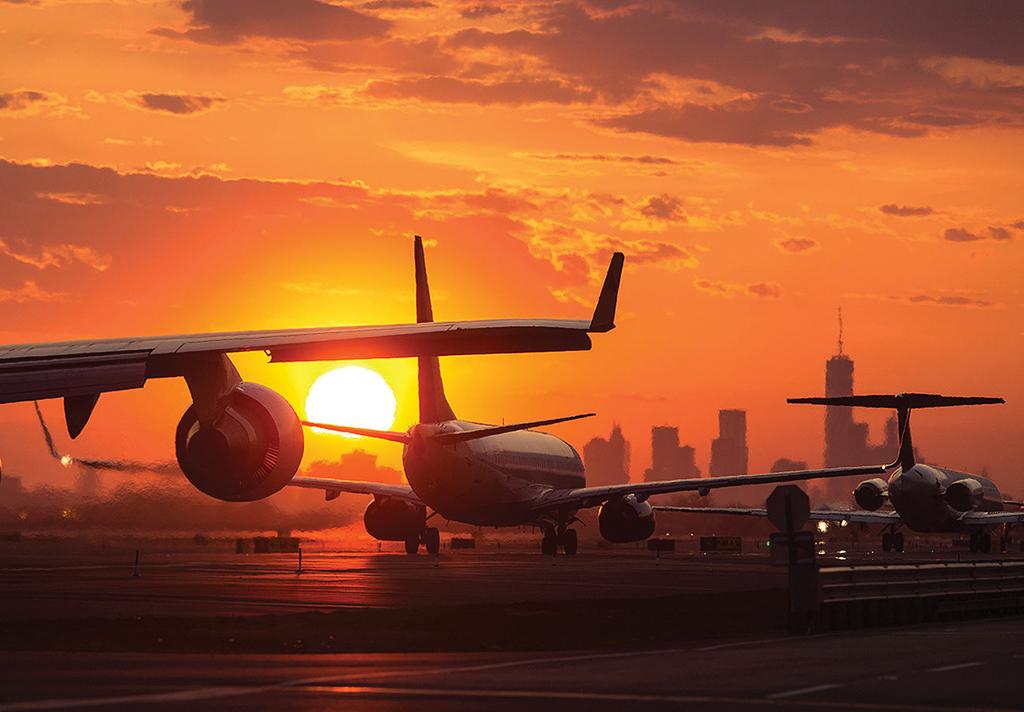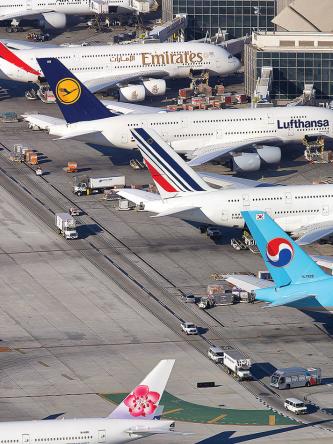
Giovanni Bisignani’s communications style did not meet with everyone’s approval: “Basta,” he would say to regulators at International Air Transport Association (IATA) events in his native Italian when he wanted to convey “enough is enough.” While the former IATA director general and CEO described it as “shouting politely,” views differ on just how polite and how effective the approach was.
One of Bisignani’s achievement cannot be overestimated, however. He moved aviation into an active position by defining clear environmental targets 10 years ago, when few others inside or outside the industry felt the need to do so. The goal was to improve fuel efficiency by 1.5% per year, achieve carbon-neutral growth starting in 2020 and reduce emissions by 50% until 2050.
- Fleet Renewal is the biggest short-term opportunity to cut emissions
- Carbon-neutral growth target hinges on Corsia benefits
- Europe prepares more taxes to curb aviation growth
Now that 2020 has arrived, and the age of self-proclaimed carbon-neutral growth is supposed to begin, the scene is very different. Aviation, more than any other industry, is under pressure from environmental groups and governments alike to do more about its environmental impact. The International Council on Clean Transportation calculated that aviation emissions rose 32% between 2013 and 2018.
“Even though the aviation sector’s emissions make up just 3.6% of global emissions and continued fuel-efficiency gains have partially decoupled CO2 emissions from expanding air transport services, it is nevertheless one of the few sectors where emissions continue to grow,” said Henrik Hololei, the European Commission’s director general for mobility and transport, at the International Aviation Club in Washington recently. “This is not sustainable.”
Like few other industries, and unlike much bigger polluters, the sector must now play defense and highlight what it considers to be its many environmental achievements to fend off more taxes or even more draconian measures. The proposed measures include a ban on domestic air travel, demanded by more than a few in Germany, or the abolishment of frequent-flier programs, as suggested in a recent study that looked at unnecessary incentives for flying. And there is a growing movement, originating in Scandinavia, that passengers should be ashamed of flying because of the environmental impact and instead travel by train.
Europe is at the forefront of that drive, as other regions feel less urgency, or none at all, to rein in aviation’s growth and impact.
It is clear that airlines have much to do before sustainable aviation fuels become available in sufficient quantities to significantly reduce carbon emissions. Carriers have even more work before new propulsion concepts, whatever they may be, can deliver on their promise over the next several decades.

One major project is Corsia, the Carbon Offsetting and Reduction Scheme for International Aviation. If all goes well, it is to mitigate 2.5 billion tons of CO2 emissions over 15 years and make available $40 billion in funds for offset projects. But there are questions as to whether the many projects around the world are really effective in compensating for aviation emissions and can be properly supervised. More important, Corsia does not reduce aviation’s original emissions output.
“Arguing that Corsia is a sufficient tool is not enough anymore,” Hololei says. “I think that the industry has not been able to grasp or understand the changing societal trends and expectations.”
The industry as represented by IATA still cleaves to targets defined 10 years ago, even as the events of 2019 and the Paris Agreement calling for net-zero emissions by 2050 show them to be outdated. Some individual airlines have set their own targets—International Airlines Group (IAG) aims at net-zero emissions in 2050 and is offsetting of all of its domestic flight emissions starting next year. EasyJet went a step further and announced it will offset all of its emissions. KLM Royal Dutch Airlines is actively asking its passengers to consider taking the train when it is a viable option. Of course, the train is not a threat to the vast majority of its routes, but the message is still significant.
To reach their targets, airlines will have to do much more beyond offsets and sustainable aviation fuels. IAG calculates that with no change to today’s technology and processes, 43% of projected emissions will have to be offset to achieve its net-zero target. Biofuels could cut emissions 18%. But there is a large block (39% of the needed emissions cuts) airlines will need to address through operating efficiencies and changes in procedures.
IAG is replacing its Boeing 747-400 fleet with Airbus A350-1000s, and the results from the initial phase of operating its first three A350-1000s are quite stunning: The aircraft are using 40% less fuel on the same routes. This may be an extreme case, but fleet replacement nonetheless presents a major near-term opportunity to cut back on emissions per flight, with aircraft such as the A321neo burning 20% less fuel than predecessors. The problem is that replacing in-service fleets takes a long time, and there often is no economic incentive for airlines to do so.
Lufthansa recently calculated it could well have held onto its fuel-guzzling Airbus A340s for much longer, as they will soon be fully depreciated, without seeing any negative financial impact. It is a sign of greater environmental and political sensitivity that the airline nonetheless opted to order more A350s and Boeing 787s last year. Next on Lufthansa’s list is a major narrowbody acquisition this year.
There have already been noticeable performance improvements in commercial aviation’s environmental impact. According to Bernstein Research, airlines have improved fuel efficiency by 3% annually in recent years. On average, airlines the analysts cover have grown 6.5% annually since 2021, but emissions have only increased 3.2%. The problem is that there still has been an increase. Bernstein analysts calculated that around one-third of the efficiency gain is due to higher load factors, and two-thirds is due to the use of more modern aircraft.
“Aircraft designs have received substantial, ongoing technology efficiency improvements over past decades, typically offering a 20-30% reduction in energy intensity compared to older aircraft models,” the Intergovernmental Panel on Climate Change (IPCC) writes. “Further fuel efficiency gains of 40-50% in the 2030-50 timeframe [compared to 2005] could come from weight reduction, aerodynamic and engine performance improvements, and aircraft systems design.”
But IPCC researchers warn that “the rate of introduction of major aircraft design concepts could be slow without significant policy incentives, regulations at the regional or global level, or further increases in fuel prices.” In other words, additional taxes the airlines want to avoid at all costs could be a tool to incentivize faster investment, the IPCC says.
The IPCC lists other means airlines have to reduce their carbon footprints: “Retrofit opportunities, such as engine replacement and adding winglets can provide significant reductions. Improving air traffic management can reduce CO2 emissions through more direct routings and flying at optimum altitudes and speeds. Efficiency improvements of ground service equipment and electric auxiliary power units can provide some additional greenhouse gas reductions.”
Bernstein Research analyst Daniel Roeska warns that the pressure to improve environmental performance could shift the balance of power in the industry somewhat, as not all airlines are in the same position. “Airlines that grow fast will likely increase their total emissions faster than technological advances can offset,” Roeska writes in a note to clients.
“Airlines with newer technology will face greater challenges increasing their efficiency,” he continues. “Both effects will work to the advantage of larger, older and less efficient airlines in Europe. If more regulatory cost is added for all airlines, and fast-growing plus efficient airlines have fewer opportunities to reduce their emissions, the relative cost difference between Europe’s low-cost and full-service carriers will narrow—with low-cost carriers being disadvantaged and full-service carriers gaining a relative advantage.”
The industry is not following a coherent approach. Even in Europe, where political pressure is the most intense, tactics vary. Air France, like British Airways, plans to offset all emissions on domestic flights starting in 2020. Lufthansa gives passengers the option to offset emissions during the booking process, but it is only an option, not a requirement. Lufthansa does offset all emissions caused by its own staff travel, however.
Ryanair plans to reduce emissions to 60 grams from 66 grams of CO2 per revenue passenger kilometer until 2030. The airline aims to grow quickly over the same period—up to 70%, according to Bernstein Research estimates—and so its footprint would still become much larger without offsets.


Comments
As a proud Pratt and Whitney employee, I can say viable solutions to more efficient propulsion are here today. Look at the incredible fuel savings the F-135 JSF has offered its customer's over the past year alone; and that's just one aircraft T/M/S in a world of aviation. The race to MARS has - and will continue - to transform air travel like never before. Efficient propulsion - with new sources of fuel, including solar - aerospace carbon emissions will be left in the past before long. Thank you again for the great article.